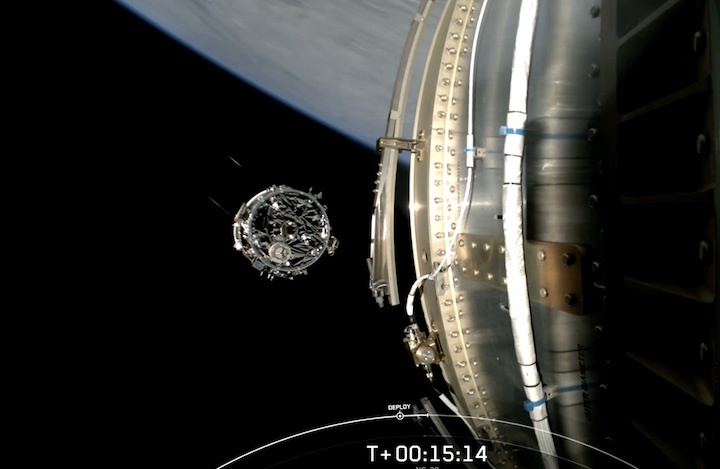1.02.2024

NASA science investigations and cargo aboard a Northrop Grumman resupply spacecraft are on the way to the International Space Station. Launch occurred at 12:07 p.m. EST Tuesday on a SpaceX Falcon 9 rocket from Space Launch Complex 40 at Cape Canaveral Space Force Station in Florida.
Live coverage of the spacecraft’s arrival will begin at 2:45 a.m. Thursday, Feb. 1, on the NASA+streaming service. Coverage also will air live on NASA Television and on the agency’s website. Learn how to stream NASA TV through a variety of platforms including social media.
Cygnus is scheduled for capture at 4:20 a.m. by the Canadarm2 robotic arm, which will be operated by NASA astronaut Loral O’Hara with assistance from NASA astronaut Jasmin Moghbeli.
Installation coverage will resume at 5:45 a.m. Watch all events at:
Northrop Grumman’s 20th cargo flight to the space station is the ninth under its Commercial Resupply Services 2 contract with NASA. The Cygnus spacecraft carried more than 8,200 pounds of NASA science investigations and cargo.
The resupply mission will support dozens of research experiments conducted during Expedition 70. Included among the investigations are:
- the first surgical robot on the space station
- an orbit re-entry platform that collects thermal protection systems data
- a 3D cartilage cell culture that maintains healthy cartilage in a lower gravity
- a metal 3D printer, an autonomous semiconductor manufacturing platform
These are just a sample of the hundreds of investigations conducted aboard the orbiting laboratory in the areas of biology and biotechnology, physical sciences, and Earth and space science. Such research benefits humanity and lays the groundwork for future human exploration through the agency’s Artemis campaign, which will send astronauts to the Moon to prepare for future expeditions to Mars.
The Cygnus spacecraft will remain at the space station until July before it departs and disposes of several thousand pounds of debris through its re-entry into Earth’s atmosphere where it will harmlessly burn up. The spacecraft is named the S.S. Patricia “Patty” Hilliard Robertson
Quelle: NASA
